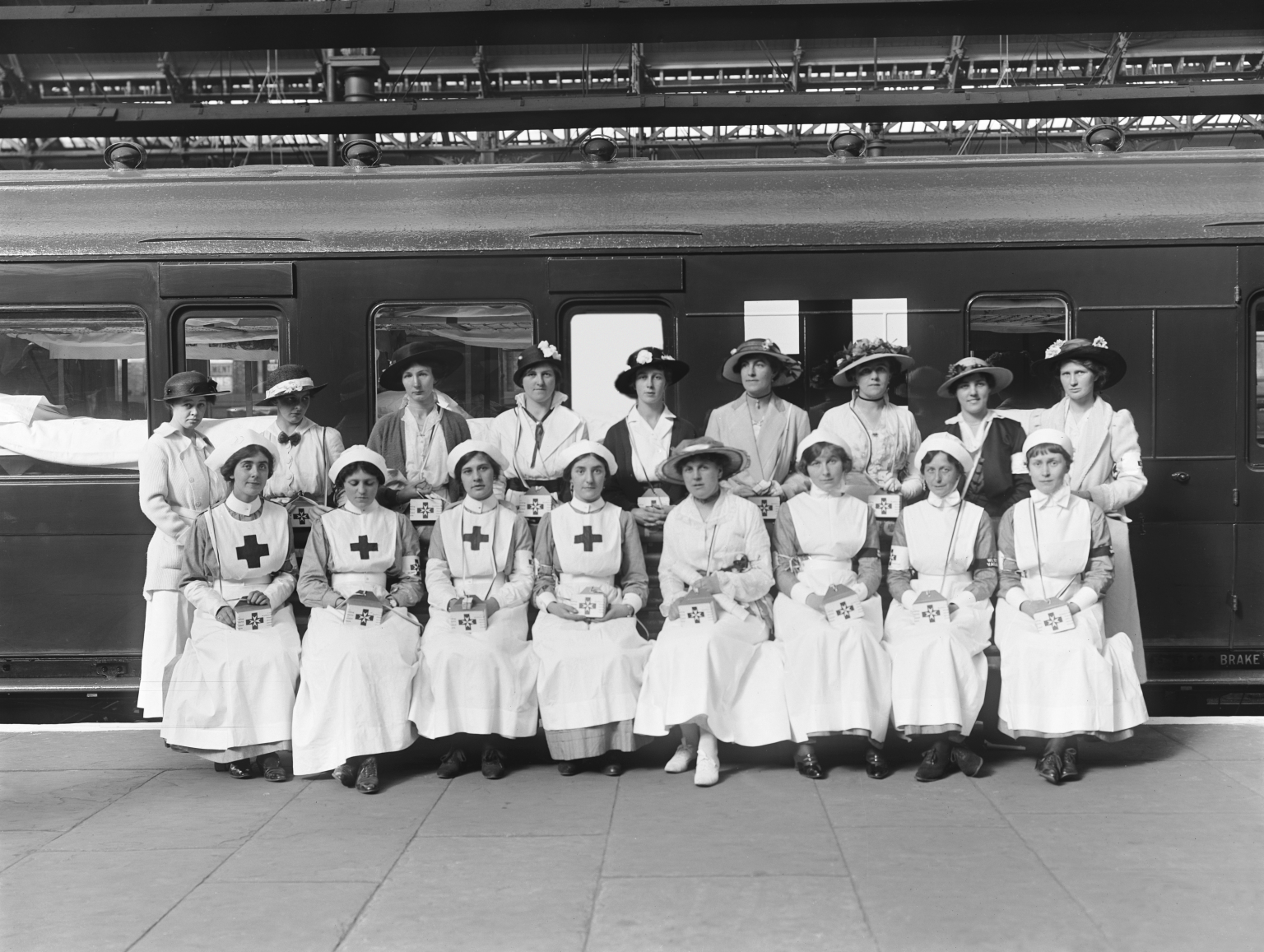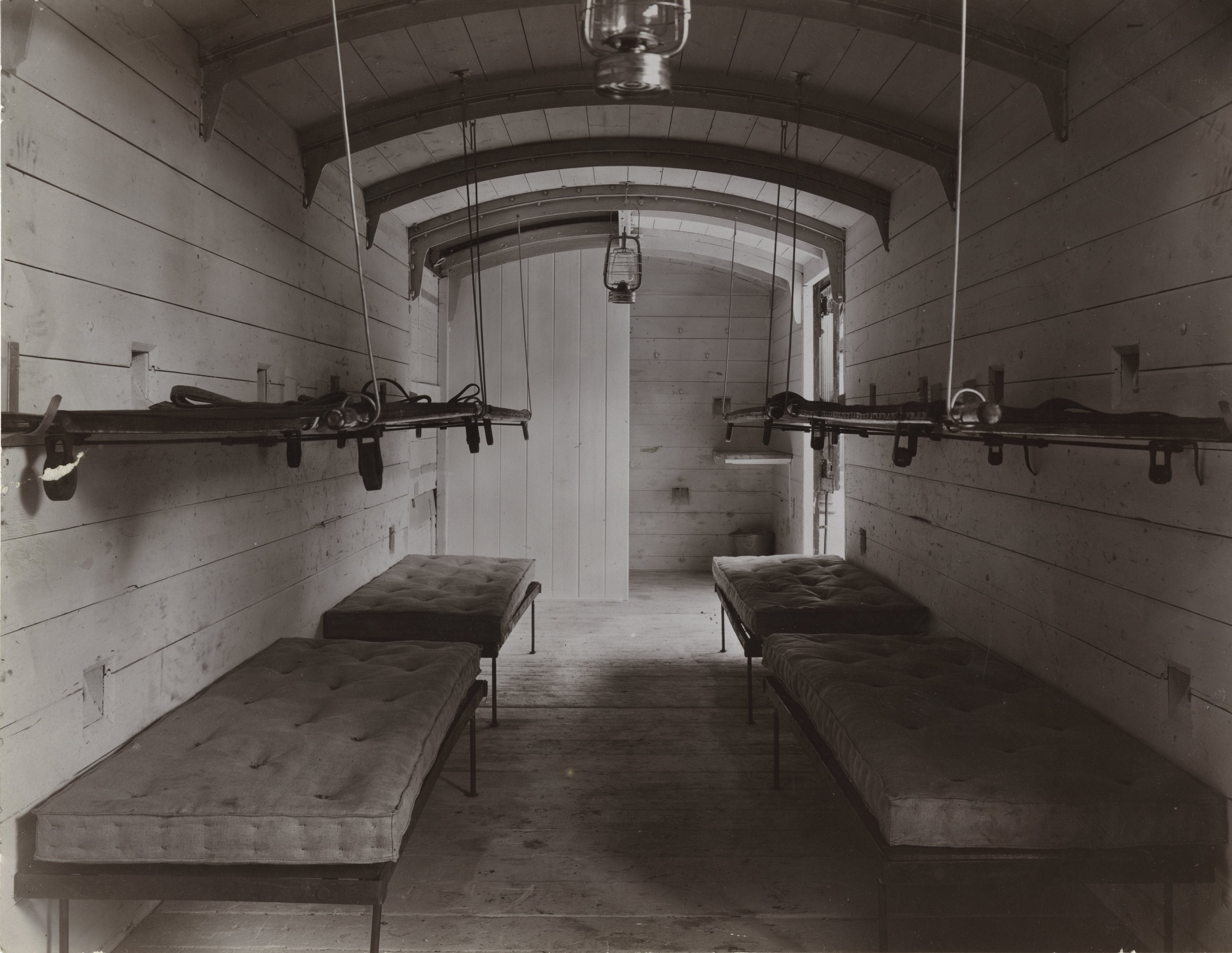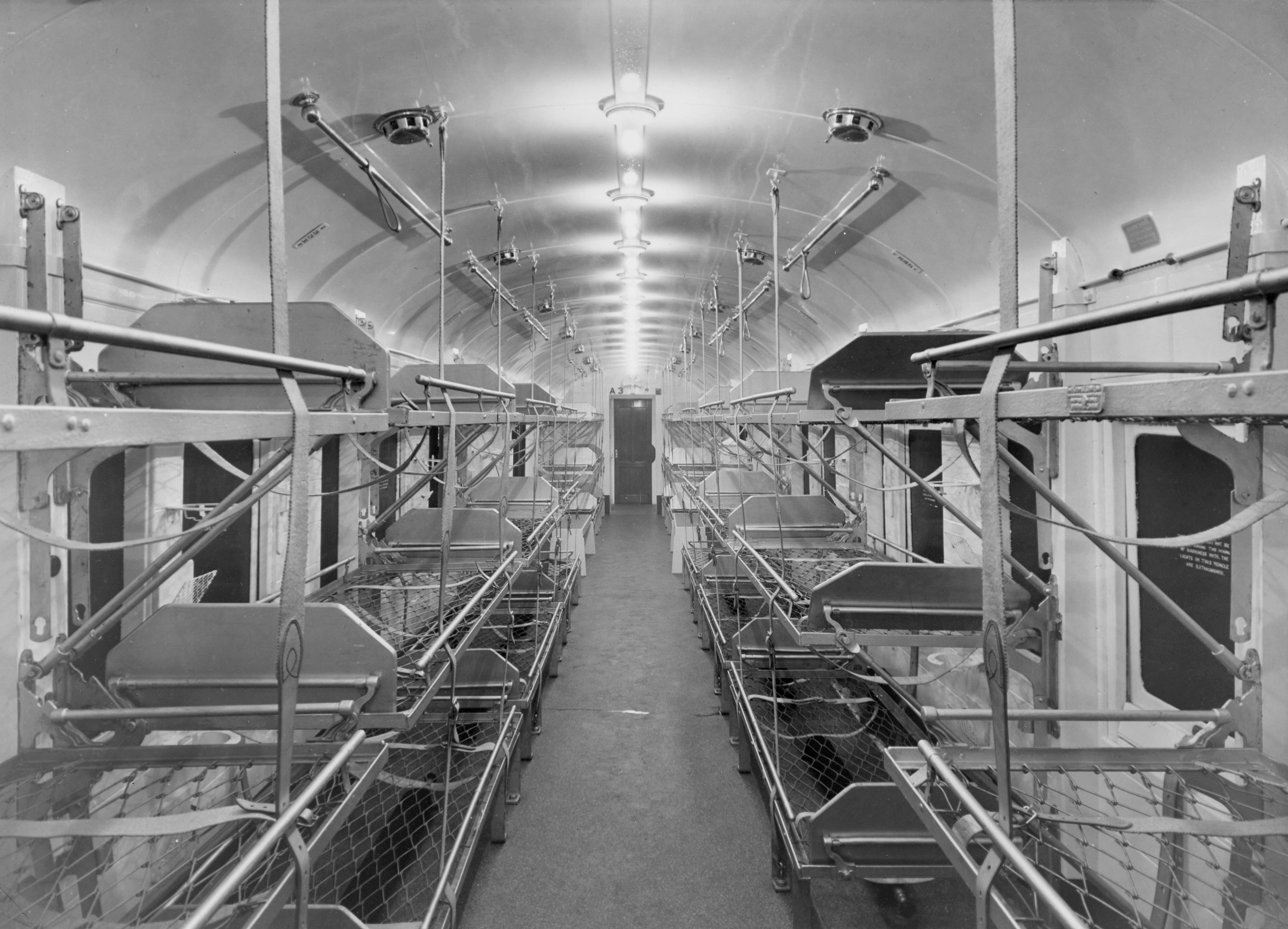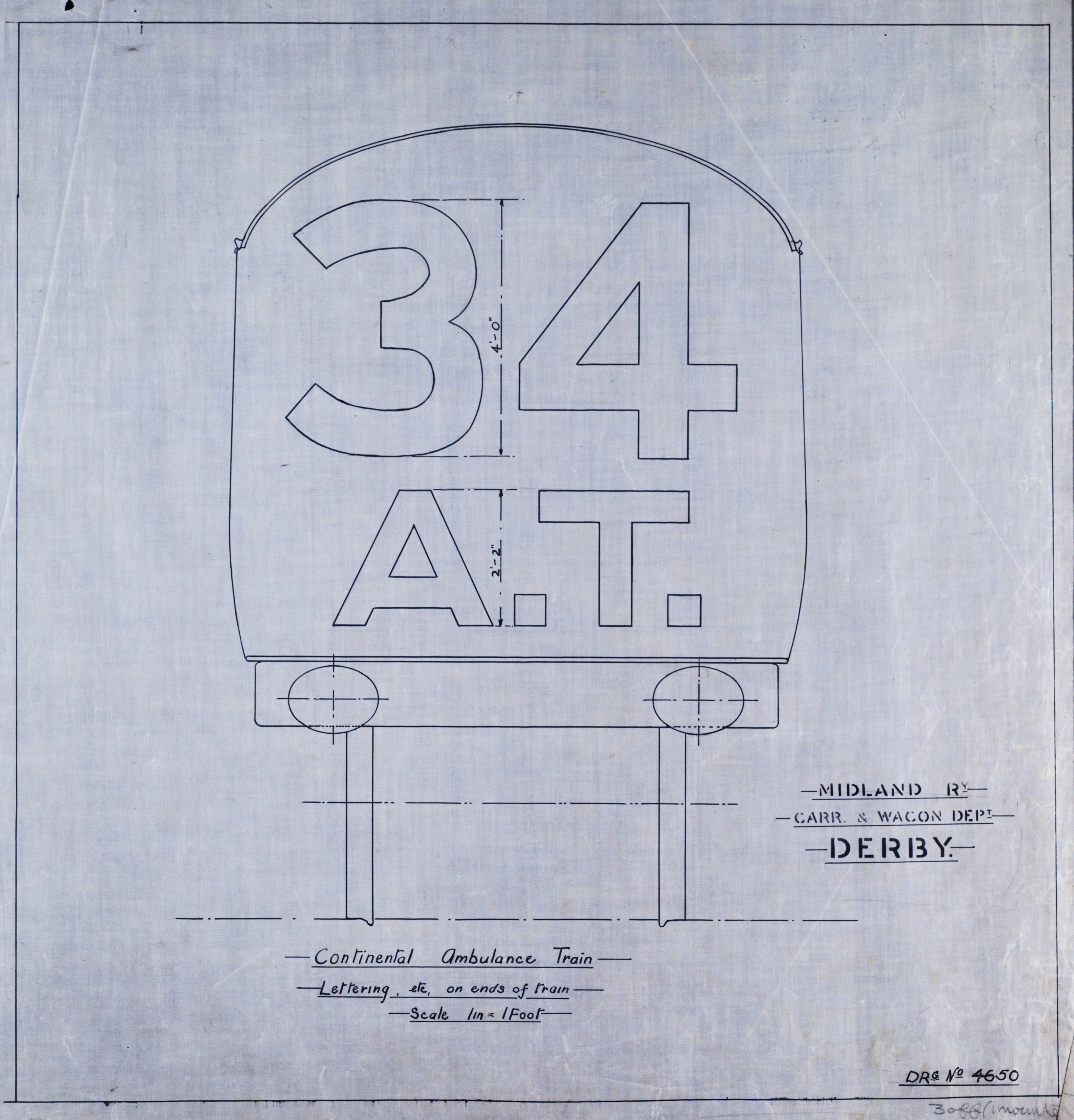Our archive and library collections reveal what it would have been like for patients, doctors and nurses to travel on ambulance trains during wartime.

The below image shows a basic ambulance train; sometimes these were nothing more than converted wagons. A nurse describes her experiences in ‘an anonymous diary of nursing sister on the western front’ (general books.net ISBN 978-1-153-60053-8, available to view in Search Engine ref B4-7/242):
‘A train of cattle trucks came in from Rouen with all the wounded as they were picked up without a spot of dressing on any of their wounds, which were septic and full of straw and dirt. The matron, a medical officer, and some of them got hold of some dressings and went round doing what they could in the time, and others fed them. Then the (censored) – got their Amiens wounded into cattle trucks on mattresses, with Convent pillows, and has a twenty hours’ journey with them in frightful smells and dirt … they’d been travelling already for two days’

Throughout wartime railway companies quickly converted existing stock into sophisticated travelling hospitals. Facilities are described in a booklet published by the Lancashire and Yorkshire Railway Company which is illustrated below. It describes the carriages as ‘finished throughout with white enamel’, and as having ‘fixed and portable fans’ and a ‘supply of 156 gallons of water.’
In the same diary mentioned above the nurse describes her experience of working in a fully converted train:
‘The twelve sitting up cases on each carriage are a joy after the tragedy of the rest. They sit up talking and smoking till late, because they are so surprised and pleased to be alive, and it is too comfortable to sleep’

Men travelled on bunks. Robert Graves in his book ‘Goodbye to all that’ (Penguin, 1929 ISBN 0-14-018098) describes his experience of travelling in this way:
‘That evening, the R.A.M.C. orderlies dared not lift me from the stretcher to a hospital train bunk, for fear of it starting hemorrhage in the lung. So they laid the stretcher above it, with the handles resting on the head-rail and foot-rail. I had now been on the same stretcher for five days. I remember the journey as a nightmare. My back was sagging, and I could not raise my knees to relieve the cramp, the bunk above me only a few inches away.’

The archive contains drawings of fittings, fixtures and layouts providing an insight into what it would be like for those who lived on the train day-in, day-out.

This drawing shows lettering and numbering on the rear of an ambulance train; the number 13 was not used on ambulance train stock in World War One.

Come to the museum on 23 November 2013 and listen to a set of free talks on the history and experience of travelling on board ambulance trains. The event also includes a chance to see original items from our archive.
The event is delivered in partnership with The National Archive’s Explore your Archive campaign. For more information on speakers and how to book see our event page
thank you, I really found this post interesting
Great post, really wish I could make this as my book ‘The North Eastern Railway in the First World War’ due out next month covers the subject of the NER Ambulance Trains, i’d be happy to send over the information I have on them if it is of use? You may already have it though
Is there anyway I can find out which route ambulance train 29 took please.